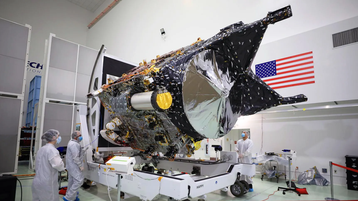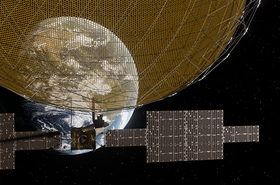NASA has sent test data nearly 10 million miles (16 million kilometers), encoded on a near-infrared laser.
The Deep Space Optical Communications (DSOC) experiment sent data to Earth from the Psyche spacecraft, about 40 times beyond the Moon's orbit. The signal was received by the Hale Telescope at Caltech’s Palomar Observatory in San Diego County, California.
“Achieving first light is one of many critical DSOC milestones in the coming months, paving the way toward higher-data-rate communications capable of sending scientific information, high-definition imagery, and streaming video in support of humanity’s next giant leap: sending humans to Mars,” said Trudy Kortes, director of Technology Demonstrations for the Space Technology Mission Directorate at NASA.
Test data was sent simultaneously via the uplink and downlink lasers, in the first test of optical communications in deep space.
Psyche's main mission is to study the metallic asteroid Psyche, which it is due to reach in 2028. As well as testing laser communications, Psyche is the first probe to use Hall effect ion thrusters.
As Psyche travels further from Earth, NASA will continue to test laser communications. Already, its near-infrared photons are taking 50 seconds to travel to Earth - but at its furthest, they will take around 20 minutes. This will require uplink and downlink lasers to adjust for the fact that the spacecraft and planet will have moved during that time.
“Optical communication is a boon for scientists and researchers who always want more from their space missions, and will enable human exploration of deep space,” said Dr. Jason Mitchell, director of the Advanced Communications and Navigation Technologies Division within NASA’s Space Communications and Navigation (SCaN) program. “More data means more discoveries."




